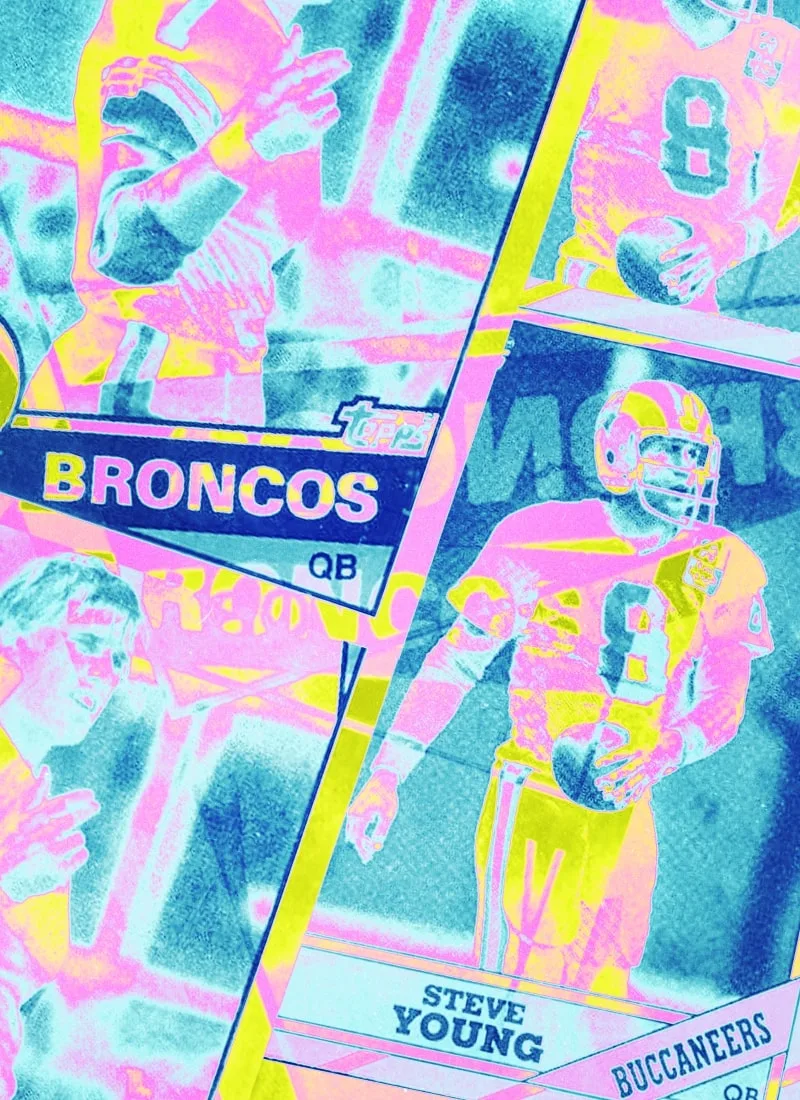
Eventual HOFers and Their Rookie Cards
Sometimes, future stars turn in rookie seasons worthy of the rest of their careers: for instance, when Aaron Judge slugged 52 HR in 2017 or when Ichiro Suzuki hit .350 in 2001 – with freshman numbers like these, it’s obvious to everyone that a significant career is underway. But a comet does not light up the sky every time a future Hall of Famer is born, and some outstanding careers begin with a whisper.
A less-than-stellar rookie season is common among NFL quarterbacks who eventually make their way to the Hall of Fame. John Elway and Steve Young both turned in mediocre debut seasons, while Terry Bradshaw threw for 6 TDs, 24 Interceptions, and a wretched 38% completion percentage. Very few collectors went seeking rookie cards for these Hall of Famers until years down the line when it became clear that their rookie season was the anomaly.

1984 Topps Football #63John Elway
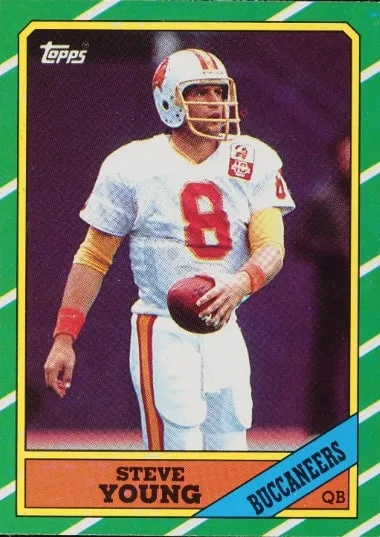
1986 Topps Football #374 Steve Young
In the NFL, where a season means seventeen games, this kind of outlier rookie season is fairly common. In Major League Baseball, however, with its 162-game schedule, this pipeline—the quiet rookie season to Hall of Fame trajectory—is less common. However, there are a few notable examples of players whose faces might serve as a dictionary example of “late bloomer.”
Rookie Athletes and a Longer Road to Maturity
Harmon Killebrew finished his career with 573 HRs, but he first broke into the majors in 1954 when he was 17 years old, and it would be almost five years before his batting prowess became evident. In his first five years in the league, Killebrew racked up more strikeouts than hits, and never played in more than 44 games in a single year.
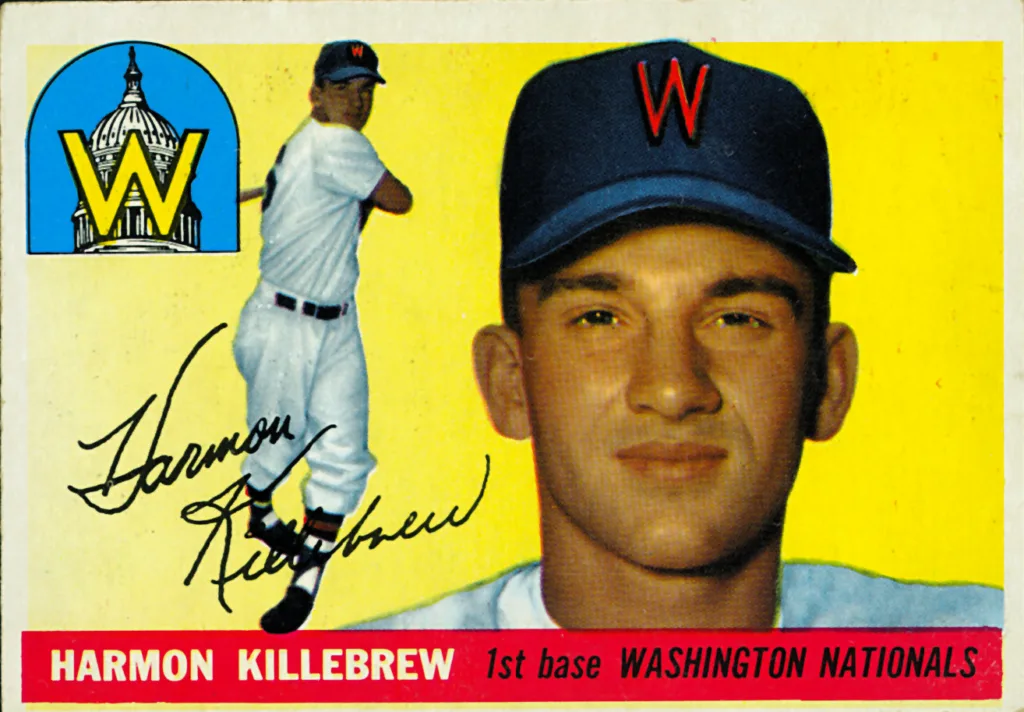
1955 Topps Baseball #124 Harmon Killebrew
In the twelve years that followed, however, Killebrew hit more than 40 home runs eight times. He was league MVP with Minnesota in 1969, and by the time his career was winding down, as a 13-time all-star, he was a sure bet for the Hall of Fame. More recently, Jim Thome fit in this category alongside Killebrew: he found the starting role to be elusive during his first few seasons, and it wasn’t until his fifth season that he started posting the kinds of numbers that would typify his HOF career.
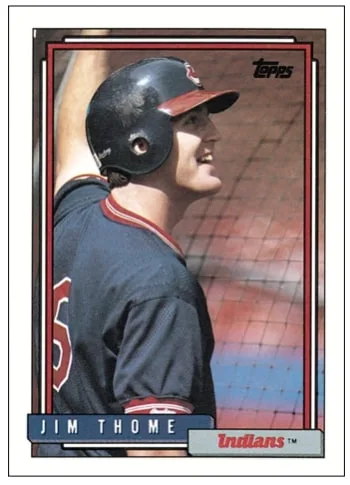
1992 Topps Series 1 #768 Jim Thome
In cases like Killebrew’s, the slow start can mostly be attributed to a lack of maturity. Scouts and managers likely recognized the potential in Killebrew but decided to hold him back until they knew he was ready to explode onto the scene as a star. When future stars only play in a few games during their rookie season, it can be difficult to judge what it means for their long-term prospects, but it’s not uncommon for young players to take a few years before getting the start in 150 games or more.
“Commons” Bin RCs to Collector Chase Cards
Casual card collectors may have thumbed past Killebrew’s 1955 rookie card for a few years, and the same can be said of Thome’s 1992 Topps rookie card. When it takes a player a few years to “pop,” their cards may need to be retrieved from the commons bin some years later. To add a clear example, hobbyists who remember opening wax packs in the summer of 1987 probably don’t remember pulling Greg Maddux cards that year with any excitement.

1987 Topps Traded #70T Greg Maddux
Maddux would eventually be elected to the Hall of Fame in his first year of eligibility with 97.2% of the votes in his favor, but his rookie performance gave no sign of the career that would follow. Having played in only six games in 1986, Maddux’s full rookie season in 1987 turned up a very uncharacteristic 5.61 ERA and a disappointing 6-14 record.
By the mid-90s, Maddux’s mound appearances had become a phenomenon. With a WHIP consistently dipping below 0.900 and respective ERAs in ’94 and ‘95 of 1.56 and 1.63, he had by then become the untouchable artist that everyone (except Tony Gwynn!) feared. His 4 Cy Young Awards and 18 Gold Gloves testify that some superstars need a little extra runway to achieve flight.
Rookies Riding a Breakout Season to the Hall of Fame
Earlier this year, Adrián Beltré was inducted into the Hall of Fame on his first ballot, and the vote wasn’t a nail-biter (95.1% favoring). From his rookie season in 1998, he posted mid-.200 batting averages and showed only modest power at the plate. His cards, including his 1997 Bowman Chrome #182 rookie card, were no one’s highest priority.
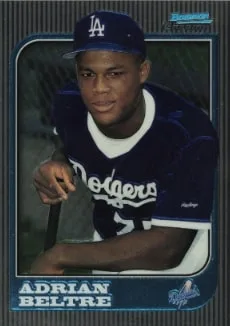
1997 Bowman Chrome #182 Adrian Beltre
But in 2004 Beltré blasted 48 HR and his average jumped to .334. He went on to win four Silver Slugger awards and finished his career in 2018 with 3,166 hits and 477 HR. His career arc shows that even in the age of the optimized professional athlete, it’s possible for some players to continue improving in their late 20s and 30s.
Sports fans love a come-from-behind victory, and a late bloomer is the embodiment of that principle in an individual athlete. Perhaps the truth is we watch them admiringly with the hope that our own best days are ahead of us. These “dark horse” athletes surprise us by discovering new talents later in their careers and watching them elevate their success is a reward for fans who were rooting for them from the beginning.
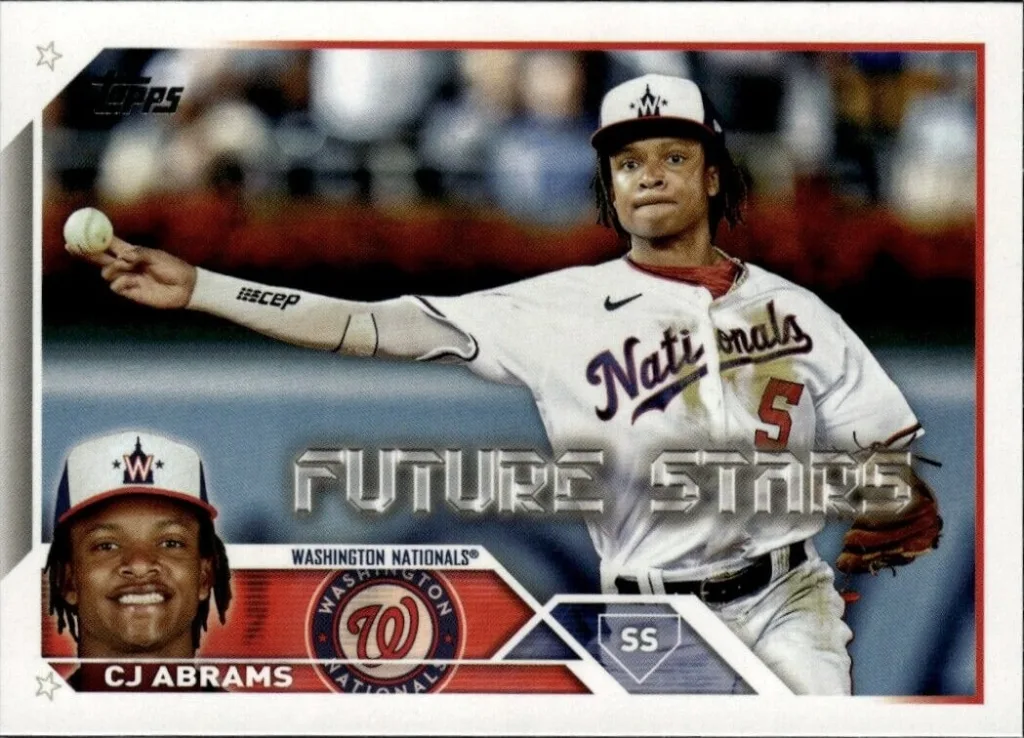
2023 Topps Series 1 Future Stars #35 CJ Abrams
After posting modest stats in his 2023 rookie season, the Washington Nationals’ CJ Abrams is off to the races in 2024, and it’s thrilling to wonder: is this a breakout season we’re witnessing? This sort of speculation is a fundamental part of the hobby. This rare career trajectory gives fans an opportunity to believe. So, if you have a favorite player who seems to have all the skills, but his numbers aren’t impressive yet, hold onto his cards; he might be a future Hall of Famer!